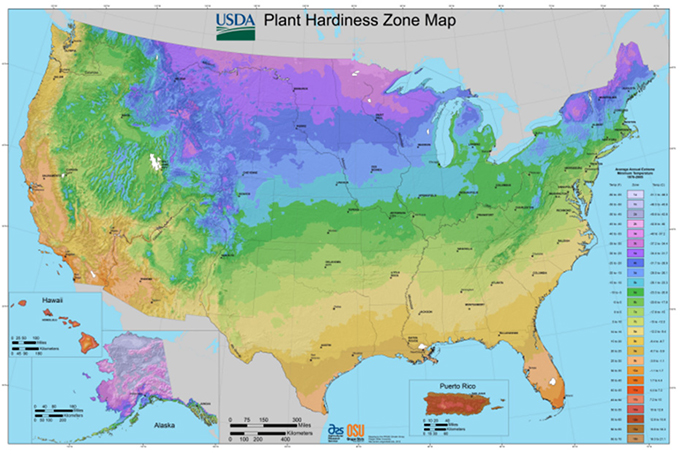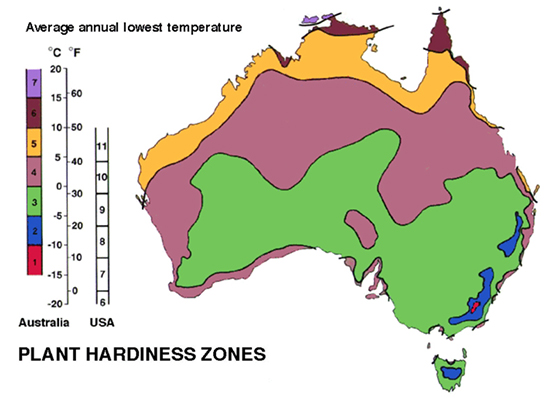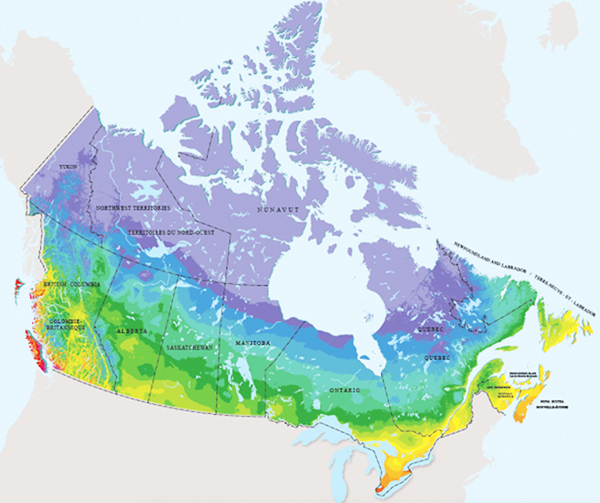
Earlier, we talked about animals migrating up mountains to find cooler temperatures, in response to a warming climate. Well, crops are migrating, too.
The USDA map of plant hardiness divides North America into 13 zones.
Zone 1 is farthest north, with winters colder than 50 below zero. Zone 13 is farthest south, with winters around 60 degrees Fahrenheit.
Over the last 30 years, all zones have shifted a half zone to the north, as average winter temperatures increased across the Lower 48.
Models predict that plant zones will continue to move north, about 13 miles a year. And it’s happening all over the world. In Australia, the wheat belt is moving 16 miles a year.
In response, farmers in many countries have had to change the times of year they plant or harvest. Some now have a second growing season.
Warmer weather and longer seasons have allowed some farmers to grow more lucrative crops, in higher quantities—while others have seen traditional crops fail and prized land lose its value.
Where might they go for new opportunities?
As northern latitudes get warmer, lands that were once too cold to farm may become plantable. In fact, Canada is preparing for millions of acres in its northern prairies to replace farmland potentially lost in the south.
The warming climate will continue to change plant distribution and farming practices—with both positive and negative effects on global agriculture and food supply.

Background
Synopsis: What happens when climate change forces species to move? In the plains, crop-hardiness zones are shifting steadily poleward, which impacts our food supply.
- Recent studies show that plant-hardiness zones in the U.S. have been moving north.
- Hardiness zones track the average low temperature in winter in 10oF bands. Zone 1 ranges from -60oF to -50oF, while Zone 13 ranges from 60oF to 70oF.
- Since 1990, all of these zones have moved a half zone farther north, meaning the average low temperature in winter has increased by about 5 degrees all over the Lower 48 states.
- Models show that these hardiness zones are likely to continue creeping north at about 13 miles per year.
- Farmers will feel the impact of this climate migration as the zones where crops thrive best shift northward, forcing them to change what they plant.
- Some southern and midwestern U.S. agricultural areas could see agricultural yields decline 10 percent in the next 25 years.
- In Australia, the wheat belt is moving southward toward the coast as fast as 16 miles per year, impacting the country’s wheat production.

- In Canada, northward-migrating plant-hardiness zones may result in an expansion of farming into formerly frigid areas, as well as of more lucrative crops into existing farms.
- In central Canada, prairies in three provinces covering flat land twice the size of France could see 25–40 percent increases in the amount of arable land.
- With increases in agricultural production of about 50 percent by 2050 required to feed the world’s hungry population, food exports from this newly arable land will be vital.
- These remote areas will need infrastructure, including roads and irrigation systems to enable future farming.
- Water-resource planning will be critical to mitigate possible future drought and soil erosion from these promising lands.

